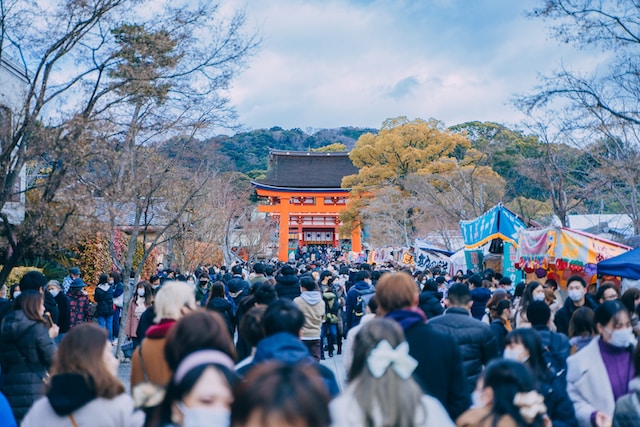
Long before the time of the Samurai and the Shoguns, religion had already taken root in Japan. The earliest known religion in Japan is Shinto, which means “the way of the gods”. Shinto is a polytheistic belief system that holds that the natural world is inhabited by spirits known as Kami, who are believed to be influential in the events of the world. To this day, many Japanese still practice Shintoism, and the religion remains vibrant and influential in Japanese culture.
Buddhism also came to Japan from China in the 6th century. While Buddhism has its roots in India, it has evolved over time and taken on various forms to suit the culture in which it is practiced. In Japan, Buddhism took on its own unique identity and has become deeply ingrained in the country’s culture.
In addition to Shinto and Buddhism, many other religions have taken hold in Japan. Christianity arrived in the country in the 16th century but was banned until the mid-19th century. Today, Christianity is practiced by a small but dedicated group of Japanese people. Islam also has a presence in Japan, mostly due to the immigration of Muslims from other countries.
In terms of philosophy, Japan has a rich tradition of thought that has influenced the world. One of the most influential Japanese philosophers is Kitaro Nishida, who developed a system called “Nishida philosophy”. His ideas centered around the concept of “Absolute Nothingness” and sought to explore the nature of existence and the relationship between humans and the universe.
Another influential thinker is Zen Master Dogen, who founded the Soto school of Zen Buddhism in Japan. Dogen’s philosophy emphasized the importance of meditation and mindfulness, and sought to help individuals achieve a state of enlightenment.
Whether through religion and philosophy, Japan’s ancient traditions continue to shape the country and impact people around the world.
Shinto at Birth, Christian in Death?
Some people have said that many Japanese follow a pretty secular philosophy, but are shinto at birth, Buddhist during life, and Christian in death. This means that while many Japanese people may not actively practice a particular religion and philosophy, they still hold deep cultural and spiritual beliefs that are rooted in their country’s rich history. These beliefs are often intertwined with various aspects of Japanese culture, such as art, literature, and even politics.
For example, many Japanese festivals are based on Shinto practices and beliefs, and the country’s imperial family still performs important Shinto ceremonies. In addition, Buddhist temples and shrines can be found throughout Japan, and many people visit these sites to pray or meditate. Even non-religious practices, such as tea ceremony and flower arranging, have been influenced by Zen Buddhism and other philosophical traditions. Therefore, religion and philosophy play an important role in shaping Japanese culture and society, and continue to inspire people around the world to this day.
What percent of Japanese people are religious?
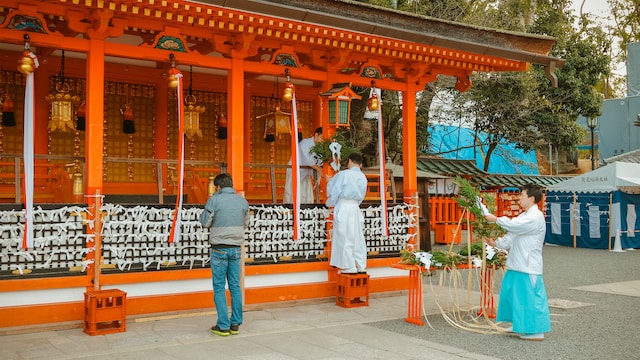
According to a 2019 survey conducted by the Japanese government, approximately 69 percent of the population in Japan does not identify with a particular religion and philosophy. However, this does not necessarily mean that the majority of Japanese people do not hold spiritual or cultural beliefs influenced by religions such as Shinto or Buddhism. There is also a smaller percentage of the population who do identify with a particular religionand philosophy, with the largest portion being Shinto at around 79% and Buddhism at around 66%.
Christianity and Islam make up smaller percentages around 1-2%. It is important to note that while religion may not play a central role in the lives of all Japanese people, its impact on the country’s culture and history cannot be understated.
For example, even non-religious people still have fun at festivals throughout the country. These events may have tons of traditional religious elements, but are still enjoyed by hundreds of thousands of people every year. So even if they’re not actively worshiping deities, Japanese people enjoy faith and religion.
Shinto: The Indigenous Belief System
Deeply rooted in the history and culture of Japan, Shinto is an indigenous belief system that holds significant influence over the lives of the Japanese people. With its emphasis on the reverence of nature and ancestral spirits, Shinto has shaped Japanese customs, traditions, and even political ceremonies. In this section, we will delve into the fundamental aspects of Shinto, exploring its origins, beliefs, rituals, and cultural impact.
Origins of Shinto
Shinto, meaning “the way of the gods,” traces its origins back to ancient Japan, long before the arrival of Buddhism or other foreign religion and philosophy. It emerged as a collection of myths and practices that sought to explain the natural world and establish a harmonious relationship between humans and the divine. Shinto’s origins are intertwined with Japan’s rich mythology, particularly the creation stories involving deities known as Kami.
Beliefs and Principles
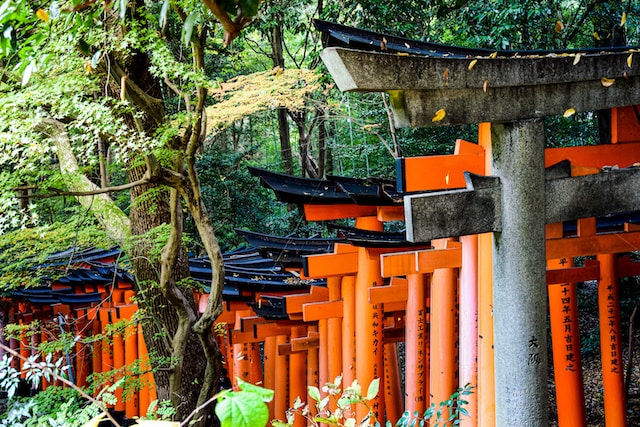
Shinto is characterized by its polytheistic nature, recognizing an array of Kami spirits that embody various aspects of nature, geographical features, and ancestral figures. These Kami are believed to influence and govern the affairs of the world, including natural phenomena, human fertility, and the prosperity of communities.
Shinto emphasizes harmony with nature and the idea of purity, considering certain spaces, objects, and even actions as sacred. Ritual purification practices, known as misogi, are often performed to cleanse oneself from spiritual impurities.
Shinto Rituals and Shrines
Shinto, with its emphasis on the reverence of nature and ancestral spirits, has shaped Japanese customs, traditions, and political ceremonies. Central to Shinto practice are rituals conducted at shrines, which serve as spiritual sanctuaries and gathering places for the community.
Purification Rituals
Shinto places a strong emphasis on purity, and purification rituals are an integral part of shrine worship. Before entering a shrine, visitors typically engage in a process of purification to cleanse themselves of spiritual impurities. This can be done by rinsing the hands and mouth with water from a ceremonial fountain called a chōzuya. In some cases, visitors may also participate in misogi, a ritual of purification involving standing under a waterfall or being doused with cold water.
Offerings and Prayers
Shinto rituals involve the offering of food, water, sake, and other items to the Kami spirits. Worshippers may bring symbolic offerings such as rice, fruit, and sake, which are presented on a small altar within the shrine.
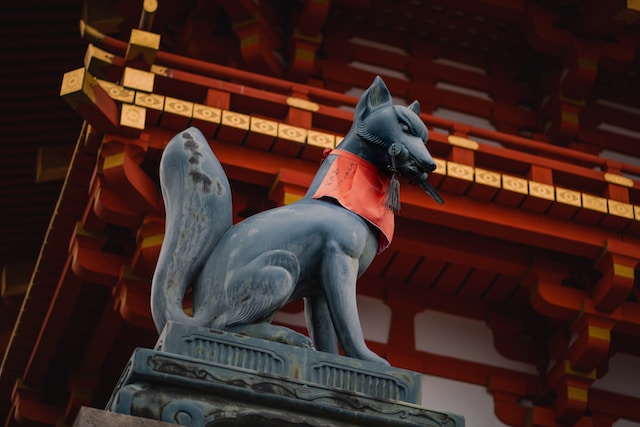
Prayers are offered to the Kami, seeking blessings and guidance for various aspects of life, such as health, success, and relationships. Traditional customs include bowing, clapping hands, and ringing bells to capture the attention of the Kami.
Matsuri (Festivals)
Matsuri, or festivals, play a vital role in Shinto practice and are celebrated throughout the year. These vibrant events involve processions, traditional dances, music, and elaborate decorations. Matsuri often commemorate specific events or honor specific Kami, with each festival having its unique customs and rituals. Many festivals also include the parading of portable shrines, known as mikoshi, through the streets, allowing people to engage directly with the Kami.
Omikuji and Ema
Omikuji are small strips of paper containing fortunes or predictions that can be found at many Shinto shrines. Visitors can purchase an omikuji, which is chosen randomly, and then read the interpretation of their fortune. Ema, or wooden plaques, are another common sight at Shinto shrines. People write their wishes or prayers on these plaques and hang them on designated areas within the shrine grounds.
Importance of Shrine Architecture and Design
Shinto shrines are typically characterized by their distinctive architecture, blending harmoniously with the natural surroundings. Shrines often feature Torii gates, which mark the entrance to sacred spaces and symbolize the transition from the profane to the sacred. The main shrine building, known as the Honden, houses the sacred object or space where the Kami is believed to reside. The design of shrines incorporates elements such as thatched roofs, verandas, and distinct colors, reflecting the aesthetic principles associated with Shinto.
Introduction to Buddhism in Japan
Buddhism, originating in ancient India, arrived in Japan from China in the 6th century. Over time, it has become deeply embedded in Japanese culture, influencing various aspects of society, art, and philosophy. Buddhism in Japan encompasses a diverse range of schools and practices, each with its own unique teachings and rituals.
Buddhism was first introduced to Japan in the 6th century through Korean and Chinese contacts. Prince Shotoku, a prominent figure in Japanese history, played a crucial role in promoting and patronizing Buddhism, establishing it as a major religion and philosophy in Japan.
Over the centuries, Buddhism in Japan has given rise to numerous schools and sects, each with its own distinct philosophy and practices. Some of the major schools include Zen Buddhism, Pure Land Buddhism, Nichiren Buddhism, and Shingon Buddhism. These schools have shaped religious and cultural landscapes in unique ways.
Beliefs and Teachings
The Four Noble Truths: Buddhism in Japan, like in other traditions, follows the core teachings of Siddhartha Gautama, the historical Buddha. These teachings revolve around the Four Noble Truths, which emphasize the reality of suffering, its causes, the cessation of suffering, and the path to its cessation.
Karma and Rebirth: Karma, the law of cause and effect, is a fundamental concept in Buddhism. It is believed that one’s actions, thoughts, and intentions create karma, which determines their future rebirths. This belief in rebirth is a central tenet of Buddhism in Japan.
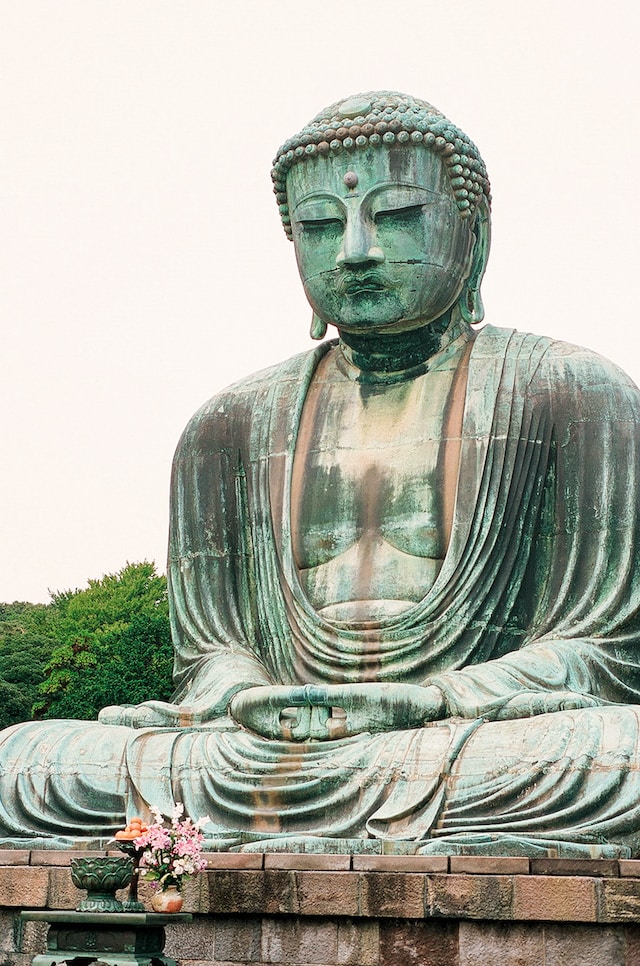
Enlightenment and Nirvana: Attaining enlightenment and realizing nirvana, the state of liberation from suffering, is the ultimate goal for Buddhists in Japan. Various practices, such as meditation and mindfulness, are employed to cultivate wisdom and compassion leading towards this goal.
Rituals and Practices
- Meditation: Meditation is a crucial aspect of Buddhist practice in Japan. Zen Buddhism, in particular, places great emphasis on meditation as a means to attain direct insight into one’s true nature. Zazen, or seated meditation, is a common practice in Zen monasteries and meditation centers.
- Chanting and Sutras: Chanting sutras, sacred texts of Buddhism, is a common practice in Japanese Buddhist temples. This ritual act is believed to create positive merits and can be performed individually or as part of a group.
- Offerings and Merit-Making: Making offerings to Buddha statues, shrine altars, and spirits is a way for Buddhists in Japan to express their devotion and accumulate merit. Offerings can include incense, flowers, food, and monetary donations.
Cultural Impact and Influence
Art and Architecture: Buddhism has deeply influenced Japanese art and architecture. Various forms of Buddhist art, such as Buddhist statues, paintings, and calligraphy, can be found in temples and museums across Japan. Buddhist architecture has also left a significant mark on the country’s iconic temples and pagodas.
Tea Ceremony and Ikebana: The Japanese tea ceremony, a customary way of preparing and serving tea, has been greatly influenced by Zen Buddhism and its principles of mindfulness and simplicity. Similarly, the art of flower arrangement, known as Ikebana, has been shaped by Buddhist concepts of impermanence and harmony with nature.
Ethical Values: The ethical teachings of Buddhism, including compassion, mindfulness, and non-violence, have permeated Japanese society and have had a profound influence on the values and behavior of individuals.
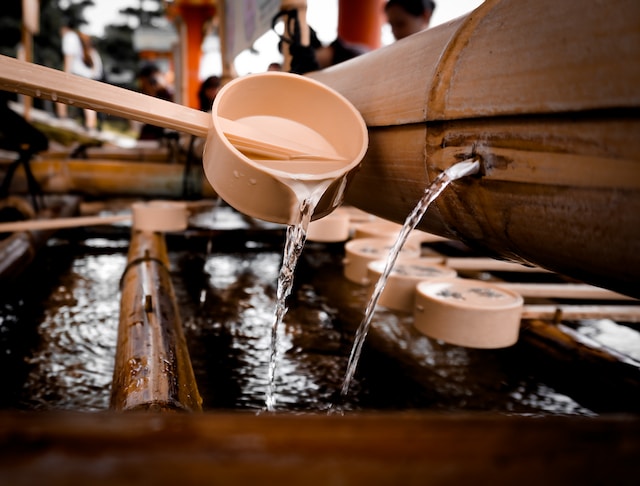
Buddhism in Japan continues to be a vibrant and integral part of the country’s spiritual, cultural, and social fabric. Its teachings and practices offer guidance, solace, and inspiration to many, contributing to the unique tapestry of beliefs and traditions in Japan.
Religion and philosophy have played integral roles in shaping Japanese culture and society throughout history. The ancient beliefs of Shinto and the transformative teachings of Buddhism have left a lasting impact on Japanese customs, traditions, and even political ceremonies. Whether through the reverence of nature and ancestral spirits in Shinto or the pursuit of enlightenment in Buddhism, the religion and philosophy governing the Japanese people continue to inspire and influence individuals around the world. These rich traditions, deeply rooted in the Japanese psyche, serve as a reminder of the enduring power of faith, spirituality, and philosophical inquiry in our ever-changing world.

